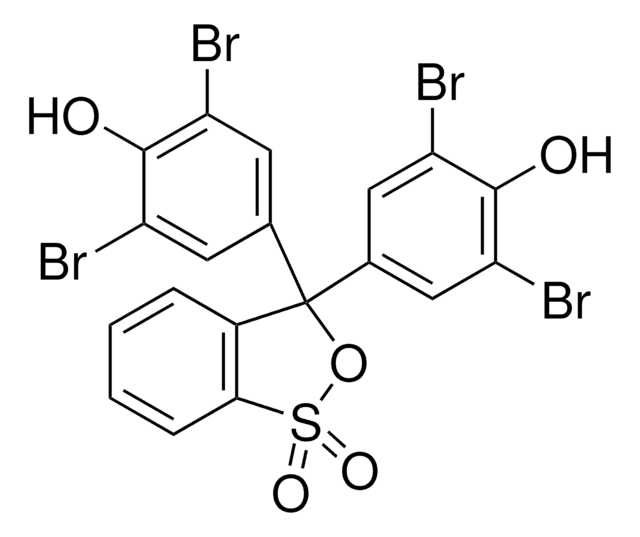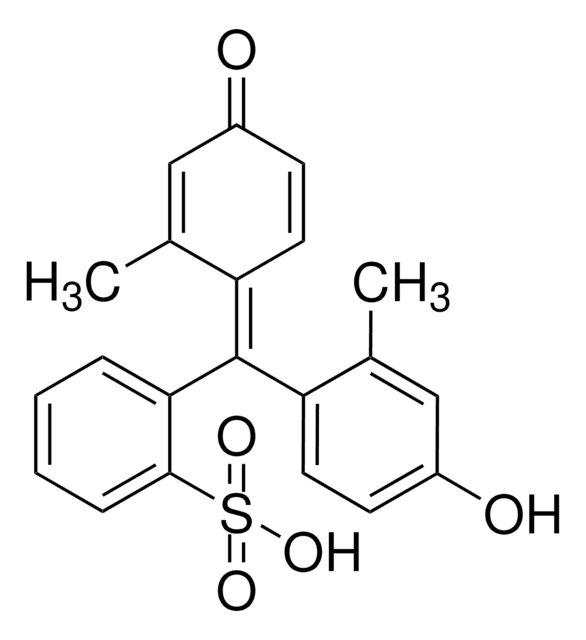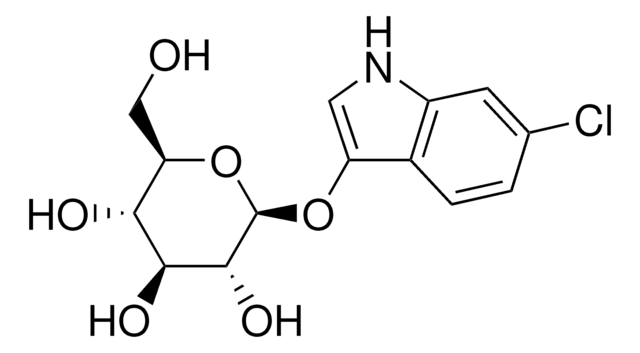199524
Chlorophenol Red
indicator grade
Sinónimos:
3′,3′-Dichlorophenolsulfonaphthalein
About This Item
Productos recomendados
grado
indicator grade
formulario
powder, crystals or chunks
color
dark brown
pH
4.8-6.7, yellow to violet
solubilidad
95% ethanol: 10 mg/mL
λmáx.
572 nm
ε (coeficiente de extinción)
≥12000 at 295-301 nm in 0.1 M NaOH
≥45000 at 573-579 nm in 0.1 M NaOH
≥5000 at 368-374 nm in 0.1 M NaOH
aplicaciones
diagnostic assay manufacturing
hematology
histology
temp. de almacenamiento
room temp
cadena SMILES
Oc1ccc(cc1Cl)C2(OS(=O)(=O)c3ccccc23)c4ccc(O)c(Cl)c4
InChI
1S/C19H12Cl2O5S/c20-14-9-11(5-7-16(14)22)19(12-6-8-17(23)15(21)10-12)13-3-1-2-4-18(13)27(24,25)26-19/h1-10,22-23H
Clave InChI
WWAABJGNHFGXSJ-UHFFFAOYSA-N
¿Está buscando productos similares? Visita Guía de comparación de productos
Categorías relacionadas
Acciones bioquímicas o fisiológicas
Palabra de señalización
Warning
Frases de peligro
Consejos de prudencia
Clasificaciones de peligro
Eye Irrit. 2 - Skin Irrit. 2 - STOT SE 3
Órganos de actuación
Respiratory system
Código de clase de almacenamiento
11 - Combustible Solids
Clase de riesgo para el agua (WGK)
WGK 3
Punto de inflamabilidad (°F)
Not applicable
Punto de inflamabilidad (°C)
Not applicable
Equipo de protección personal
dust mask type N95 (US), Eyeshields, Gloves
Elija entre una de las versiones más recientes:
¿Ya tiene este producto?
Encuentre la documentación para los productos que ha comprado recientemente en la Biblioteca de documentos.
Los clientes también vieron
Nuestro equipo de científicos tiene experiencia en todas las áreas de investigación: Ciencias de la vida, Ciencia de los materiales, Síntesis química, Cromatografía, Analítica y muchas otras.
Póngase en contacto con el Servicio técnico










